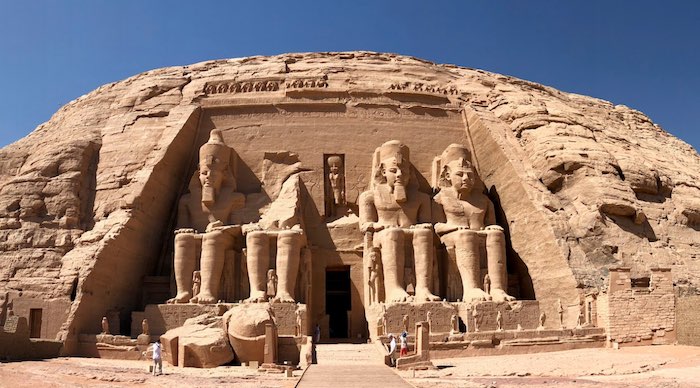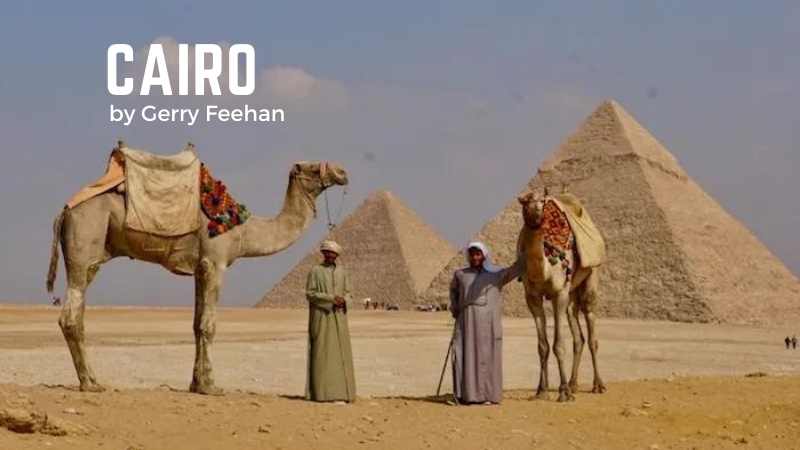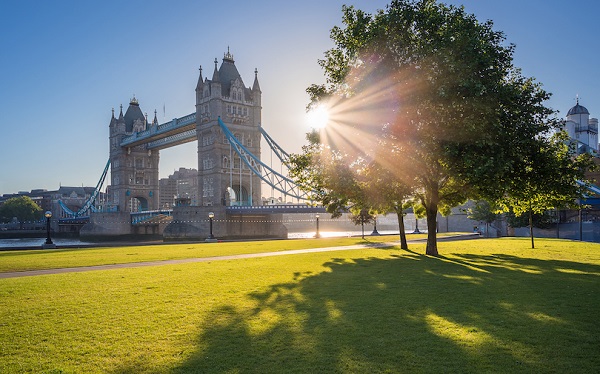Gerry Feehan
Revisiting the “All-inclusive” in Cozumel – by Gerry Feehan

What could be finer than swimming in a warm ocean, peacefully drifting over a colourful coral reef, snorkeling amidst a myriad of tropical fish? In my estimation, not much. And one of earth’s finest snorkel sites is the Island of Cozumel, in Mexico’s Yucatan Peninsula.
Or at least it was until Hurricane Wilma hit in 2005. The most intense tropical cyclone ever to strike the Atlantic, Wilma pummeled the Yucatan, flattening buildings and killing scores of people. But the death and destruction was not limited to land. The churning storm surge also destroyed life under water.
Cozumel is situated along the world’s second largest barrier reef. The Great Mayan Reef stretches from Mexico’s Yucatan 1000km south to Belize in Central America.
When Wilma finally passed, resorts that formerly advertised “walk-in” snorkeling were suddenly left with ocean desert—broken chunks of dead coral lying in a watery grave. Until then Cozumel had been high on our bucket list. Wilma moved it down a few notches.
There was a time when a Mexican all-inclusive was our go-to vacation; a cheap week on the Mayan Riviera where food was plentiful (if not particularly appetizing) entertainment was non-stop—and best of all, the Corona flowed freely. But those days passed and we gradually moved on to more exotic—and expensive—vacations. So my expectations were not high when we decided to go retro and check out the Fiesta Americana all-inclusive on Isla de Cozumel’s leeward coast. Would the snorkeling be good? Would the resort be serving up Montezuma’s Revenge for lunch?
It didn’t take long for all-inclusive nostalgia to kick in. The first day at the pool we watched a couple of hefty strangers drink themselves into a stupor and pass out before noon in the searing tropical sun. While I am as big a fan of the swim-up bar as the next guy, we were here primarily for the ocean experience.

The swim-up bar.
Cozumel’s currents are notoriously powerful, so that afternoon we walked up the beach half a kilometer, donned our gear and enjoyed a frighteningly quick drift back to the resort. Happily, a decade-and-a-half after Wilma, the reef is showing signs of recovery—tiny colourful fish darted in and out of small but healthy new coral formations.

Walk-in snorkeling at the resort.
The following morning I booked a drift dive with a local scuba operator. We motored out to Palancar Reef in Arrecifes de Cozumel National Park, jumped overboard, descended 20 meters and floated through the famed Coral Gardens. It was magical. This deeper reef was unaffected, with pristine red, green, purple and orange coral heads glowing brightly in crystal-clear water. And the sea creatures—sea stars, lobsters, small crustaceans and a multitude of reef fish—were everywhere.
The next day we rented a jeep convertible for the obligatory circumnavigation of the island. We peeked in at some of the fancy resorts on the protected west shore before driving up Cozumel’s rugged windward side where rough seas wave in from the open Caribbean, pounding the unpopulated eastern coastline. En route we stopped for a swim at Punta Sur on Cozumel’s southern tip. Warm calm waters greeted us. We snorkeled over a shallow sandy bottom, admiring large coral heads and schools of damselfish and wrasses. A puffer fish inflated itself defensively, comically. Then we drifted into a garden of sea fans. Acres of purple, pink and mauve giants swayed softly just below the surface. Miraculously, this tip of Cozumel had avoided Wilma’s random fury.

Sea fan.

Giant Brain Coral.

Sea star.
The ocean is not Cozumel’s only attraction. When a new ring road was built around the island, local leaders had the wisdom to leave the old highway in place, close it to motorized traffic and convert the road to pedestrian and bicycle use. Now cyclists from around the globe come every November to participate in the annual Cozumel Gran Fondo, nicknamed “the world’s most beautiful bike ride.”

Not all the animal life is underwater.
The Fiesta Americana had a few rusty bicycles available for patron use and, although these old contraptions had been exposed to the briny sea air for years, still it was fun to pedal around the island. We engaged in our own Petit Fondo, from the Fiesta down the coast to Playa Palancar. Our clocking for the twenty-one kilometer return trip was a respectable 60 minutes—excluding the three and a half hours we spent at the Palancar Beach Bar.

Cozumel is a long way away.
The staff at Fiesta Americana was embarrassingly polite and helpful. Early on we became attached to young Moises who manned the coffee and pastry bar in the open-air lobby. By the third morning I had no need to order. While we made poquito talk en Español, he’d whip me up a double café con leche. Moises, eighteen, worked 10 hours a day, six days a week at the resort—for about $20 a day. He didn’t live on the island—too expensive. Every day he endured a ferry commute from the mainland. And yet I’m not sure when I last met a happier, more positive person.

Moises.
One morning I was feeling self-pity over some trivial e-mail I had received. As Moises handed me my coffee, he asked if everything was okay. I felt like going back to our lovely ocean-view suite and giving myself a very hard look in the mirror—but instead I just ordered an extra helping of bacon with my scrambled eggs. The food at the Fiesta was really good—more than palatable.
So our nostalgic all-inclusive experience was a success—and a heck of a lot simpler and cheaper than organizing one’s own tropical tour. And the entertainment? Awesome—particularly when the two chubby drunken fellows reappeared bashfully on day two, pale as ivory on one side, red as a Caribbean lobster on the other.
Our visit to Cozumel was pre-Covid—but Mexico is open for business again!
Gerry Feehan is an award-winning travel writer and photographer. He lives in Kimberley, BC.

Thanks to Kennedy Wealth Management for sponsoring this series. Click on the ads and learn more about this long-term local business.
Gerry Feehan
Abu Simbel

Abu Simbel is a marvel of ancient and modern engineering
I love looking out the window of an airplane at the earth far below, seeing where coast meets water or observing the eroded remains of some ancient formation in the changing light. Alas, the grimy desert sand hadn’t been cleaned from the windows of our EgyptAir jet, so we couldn’t see a thing as we flew over Lake Nasser en route to Abu Simbel. I was hopeful that this lack of attention to detail would not extend to other minor maintenance items, such as ensuring the cabin was pressurized or the fuel tank full.
We had just spent a week on a dahabiya sailboat cruising the Nile River, and after disembarking at Aswan, were headed further south to see one of Egypt’s great
monuments. There are a couple of ways to get to Abu Simbel from Aswan. You can ride a bus for 4 hours through the scorched Sahara Desert, or you can take a plane for the short 45-minute flight.
Opaque windows notwithstanding, I was glad we had chosen travel by air. Abu Simbel is spectacular, but there’s really not much to see except the monument itself and a small adjacent museum. So most tourists, us included, make the return trip in a day. And fortunately we had Sayed Mansour, an Egyptologist, on board. Sayed was there to explain all and clear our pained expressions.
Although it was early November, the intense Nubian sun was almost directly overhead, so Sayed led us to a quiet, shady spot where he began our introduction to
Egyptian history. Abu Simbel is a marvel of engineering — both modern and ancient. The temples were constructed during the reign of Ramses II. Carved from solid rock in a sandstone cliff overlooking the mighty river, these massive twin temples stood sentinel at a menacing bend in the Nile — and served as an intimidating obstacle to would-be invaders — for over 3000 years. But eventually Abu Simbel fell into disuse and succumbed to the inevitable, unrelenting Sahara. The site was nearly swallowed by sand when it was “rediscovered” by European adventurers in the early 19 th century. After years of excavation and restoration, the monuments resumed their original glory.
Then, in the 1960’s, Egyptian president Abdel Nasser decided to construct a new “High Dam” at Aswan. Doing so would create the largest man-made lake in the
world, 5250 sq km of backed-up Nile River. This ambitious project would bring economic benefit to parched Egypt, control the unpredictable annual Nile flood and also supply hydroelectric power to a poor, under-developed country. With the dam, the lights would go on in most Egyptian villages for the first time. But there were also a couple of drawbacks, which were conveniently swept under the water carpet by the government. The new reservoir would displace the local Nubian population whose forbearers had farmed the fertile banks of the Nile River for millennia. And many of Egypt’s greatest monuments and tombs would be forever submerged beneath the deep new basin — Abu Simbel included. But the government proceeded with the dam, monuments be damned.
Only after the water began to rise did an international team of archaeologists, scientists — and an army of labourers — begin the process of preserving these
colossal wonders. In an urgent race against the rising tide, the temples of Abu Simbel were surgically sliced into gigantic pieces, transported up the bank to safety and reassembled. The process was remarkable, a feat of engineering genius. And today the twin edifices, honouring Ramses and his wife Nefertari remain, gigantic, imperious and intact. But instead of overlooking a daunting corner of the Nile, this UNESCO World Heritage site now stands guard over a vast shimmering lake.
Sayed led us into the courtyard from our shady refuge and pointed to the four giant Colossi that decorate the exterior façade of the main temple. These statues of
Ramses were sculpted directly from Nile bedrock and sat stonily observing the river for 33 centuries. It was brutally hot under the direct sun. I was grateful for the new hat I had just acquired from a gullible street merchant. Poor fellow didn’t know what hit him. He started out demanding $40, but after a prolonged and brilliant negotiating session, I closed the deal for a trifling $36. It was difficult to hold back a grin as I sauntered away sporting my new fedora — although the thing did fall apart a couple of days later.
Sayed walked us toward the sacred heart of the shrine and lowered his voice. Like all Egyptians, Sayed’s native tongue is Arabic. But, oddly, his otherwise perfect English betrayed a slight cockney accent. (Sayed later disclosed that he had spent a couple of years working in an East London parts factory.) He showed us how the great hypostyle hall of the temple’s interior is supported by eight enormous pillars honouring Osiris, god of the underworld.

Exploring the inner temple

Nefertari
Sayed then left us to our devices. There were no other tourists. We had this incredible place to ourselves. In the dim light, we scampered amongst the sculptures
and sarcophagi, wandering, hiding and giggling as we explored the interior and its side chambers. At the far end lay the “the holiest of holies” a room whose walls were adorned with ornate carvings honouring the great Pharaoh’s victories — and offering tribute to the gods that made Ramses’ triumphs possible.
Exterior photographs of Abu Simbel are permitted, but pictures from within the sanctuary are verboten — a rule strictly enforced by the vigilant temple guardians — unless you offer a little baksheesh… in which case you can snap away to your heart’s content. Palms suitably greased, the caretakers are happy to pose with you in front of a hidden hieroglyph or a forbidden frieze, notwithstanding the stern glare of Ramses looking down from above.

A little baksheesh is key to holding the key
After our brief few hours at Abu Simbel, we hopped back on the plane. The panes weren’t any clearer but, acknowledging that there really wasn’t much to see in the Sahara — and that dirty airplane windows are not really a bona fide safety concern — I took time on the short flight to relax and bone up on Ramses the Great, whose mummified body awaited us at the Egyptian Museum in Cairo.
Exodus Travel skilfully handled every detail of our Egypt adventure: www.exodustravels.com/
Gerry Feehan is an award-winning travel writer and photographer. He lives in Kimberley, BC.

Thanks to Kennedy Wealth Management for sponsoring this series. Click on the ads and learn more about this long-term local business.
Gerry Feehan
Cairo – Al-Qahirah

The Pyramids of Giza
The first thing one notices upon arrival in Egypt is the intense level of security. I was screened once, scanned twice and patted down thrice between the time we landed at the airport and when we finally stepped out into the muggy Cairo evening. At our hotel the scrutiny continued with one last investigation of our luggage in the lobby. Although Egyptian security is abundant in quantity, the quality is questionable. The airport x-ray fellow, examining the egg shaker in my ukulele case, sternly demanded, “This, this, open this.” When I innocently shook the little plastic thing to demonstrate its impermeability he recoiled in horror, but then observed it with fascination and called over his supervisor. Thus began an animated, impromptu percussion session. As for the ukulele, it was confiscated at hotel check-in and imprisoned in the coat check for the duration of our Cairo stay. The reasons proffered for the seizure of this innocuous little instrument ranged from “safety purposes” to “forbidden entertainment”. When, after a very long day, we finally collapsed exhausted into bed, I was shaken — but did not stir.
Al-Qahirah has 20 million inhabitants, all squeezed into a thin green strip along the Nile River. Fading infrastructure and an exponential growth in vehicles have contributed to its well-deserved reputation as one of the world’s most traffic-congested cities. The 20km trip from our hotel in the city center, to the Great Pyramid of Cheops at Giza across the river, took nearly two hours. The driver smiled, “Very good, not rush hour.”
Our entrance fee for the Giza site was prepaid but we elected to fork out the extra Egyptian pounds to gain access to the interior of the Great Pyramid. Despite the up-charge — and the narrow, dark, claustrophobic climb – the reward, standing in Cheop’s eternal resting place, a crypt hidden deep inside the pyramid, was well worth it. We also chose to stay after sunset, dine al fresco in the warm Egyptian evening, and watch the celebrated ‘sound and light’ performance. The show was good. The food was marginal. Our waiter’s name was Fahid. Like many devout Muslim men, he sported a zabiba, or prayer bump, a callus developed on the forehead from years of prostration. Unfortunately throughout the event Fahid hovered over us, attentive to the point of irritation, blocking our view of the spectacle while constantly snapping fingers at his nervous underlings. The ‘son et lumière’ show was a little corny, but it’s pretty cool to see a trio of 4500-year-old pyramids – and the adjoining Great Sphinx — illuminated by 21 st century technology.

The Great Sphinx

Giza at nightThe next night our group of six Canucks attended an Egyptian cooking class. Our ebullient hostess was Anhar, (‘the River’ in Arabic). Encouraged by her contagious enthusiasm, we whipped up a nice tabouli salad, spicy chicken orzo soup and eggplant moussaka. We finished up with homemade baklava. Throughout the evening, Anhar quizzed us about the ingredients, the herbs and spices, their origins and proper method of preparation. Anyone who answered correctly was rewarded with her approving nod and a polite clap. Soon a contest ensued. Incorrect answers resulted in a loud communal ‘bzzzt’ — like the sound ending a hockey game. It’s not polite to blow one’s own horn, but the Feehan contingent acquitted themselves quite nicely. If I still had her email, Anhar could confirm this.
Cairo was not the highlight of our three-week Egyptian holiday, but a visit to the capital is mandatory. First there’s the incredible Pyramids. But as well there’s the Egyptian Museum that houses the world’s largest collection of Pharaonic antiquities including the golden finery of King Tutankhamen and the mummified remains of Ramses the Great. Ramses’ hair is rust coloured and thinning a little, but overall he looks pretty good for a guy entering his 34 th century.

Ramses the Great

Then there’s Khan el-Khalili, the old souk or Islamic bazaar. We strolled its ancient streets and narrow meandering alleyways, continually set upon by indefatigable street hawkers. “La shukraan, no thanks,” we repeated ineffectually a thousand times. The souk’s cafes were jammed. A soccer match was on. The ‘beautiful game’ is huge in Egypt. Men and women sat, eyes glued to the screen, sipping tea and inhaling hubbly bubbly.

The Old Souk Bazaar

Selfies, Souk style
An aside. When traveling in Egypt, be sure to carry some loose change for the hammam (el baño for those of you who’ve been to Mexico). At every hotel, restaurant, museum and temple — even at the humblest rural commode — an attendant vigilantly guards the lavatory. And have small bills for the requisite baksheesh. You’re not getting change.
After our evening in the souk we had an early call. Our guide Sayed Mansour met us at 6am in the hotel lobby. “Yella, yella. Hurry, let’s go,” he said. “Ana mish bahasir – I’m not joking.” “Afwan,” we said. “No problem,” and jumped into the van. As we pulled away from the curb Sayed began the day’s tutorial, reciting a poem by Percy Blythe Shelly:
I met a traveller from an antique land,
Who said—“Two vast and trunkless legs of stone
Stand in the desert. . . . My name is Ozymandias, King of Kings;
Look on my Works, ye Mighty, and despair!”
And we were off, through the desert, to Alexandria. Founded by Alexander the Great in 332 BC, Egypt’s ancient capital was built on the Nile delta, where the world’s longest river meets the Mediterranean Sea. The day was a bit of a bust. The city was once renowned for its magnificent library and the famed Lighthouse of Alexandria. But the former burnt down shortly after Christ was born and the latter — one of the original seven wonders of the ancient world – toppled into the sea a thousand years ago. Absent some interesting architecture, a nice view of the sea from the Citadel — and Sayed’s entertaining commentary — Alexandria wasn’t really worth the long day trip. Besides, we needed to get back to Cairo and pack our swimwear. Sharm el Sheikh and the warm waters of the Red Sea were next up on the Egyptian agenda.

Gerry with some Egyptian admirers
Exodus Travel skilfully handled every detail of our trip: www.exodustravels.com And, if you’re thinking of visiting Egypt, I can suggest a nice itinerary. No sense reinventing the pyramid: [email protected]
Gerry Feehan is an award-winning travel writer and photographer. He lives in Kimberley, BC.

Thanks to Kennedy Wealth Management for sponsoring this series. Click on the ads and learn more about this long-term local business.
-

 2025 Federal Election2 days ago
2025 Federal Election2 days agoPolice Associations Endorse Conservatives. Poilievre Will Shut Down Tent Cities
-

 2025 Federal Election19 hours ago
2025 Federal Election19 hours agoStudy links B.C.’s drug policies to more overdoses, but researchers urge caution
-

 Alberta2 days ago
Alberta2 days agoRed Deer Justice Centre Grand Opening: Building access to justice for Albertans
-

 Business2 days ago
Business2 days agoTrump: China’s tariffs to “come down substantially” after negotiations with Xi
-

 conflict2 days ago
conflict2 days agoMarco Rubio says US could soon ‘move on’ from Ukraine conflict: ‘This is not our war’
-

 Business1 day ago
Business1 day agoChinese firm unveils palm-based biometric ID payments, sparking fresh privacy concerns
-

 2025 Federal Election2 days ago
2025 Federal Election2 days agoCanada’s press tries to turn the gender debate into a non-issue, pretend it’s not happening
-

 Environment1 day ago
Environment1 day agoExperiments to dim sunlight will soon be approved by UK government: report







